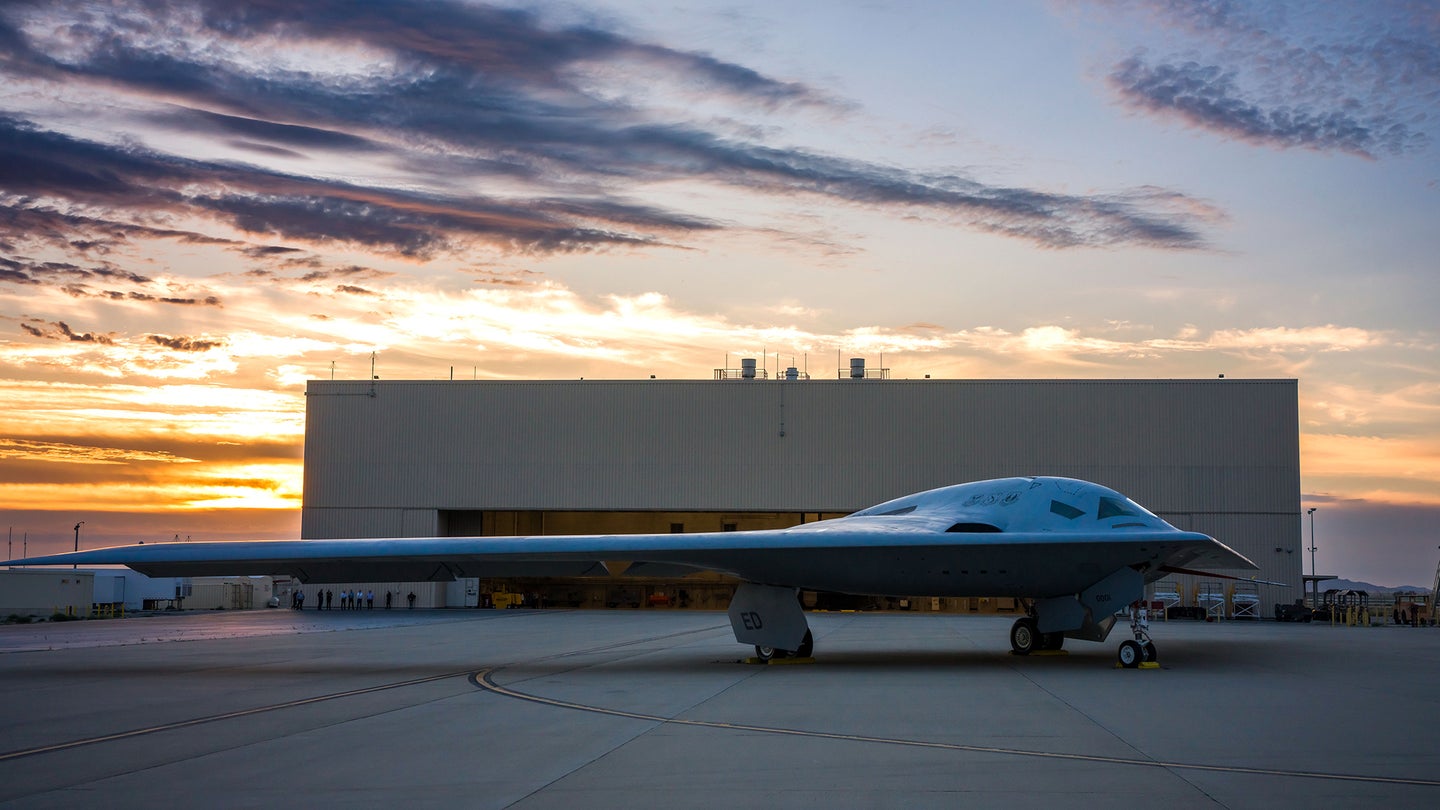New B-21 stealth bomber photos reveal tantalizing clues about the aircraft
When it comes to next-gen stealth planes, the Air Force and aerospace companies need to be very careful about the photos they release.

Aerospace companies that create a new stealth aircraft as their signature achievement face a conundrum. They put years if not decades of work into its aerodynamic and industrial design and its state-of-the-art technology, creating a machine that carries terrible destructive power. And after all that, the contours of the design can be public but the details must remain somewhat obscured. This is true especially when it comes to the physical shape of the plane itself, as the exterior form of a stealth plane is part of what makes stealth possible. All of these concerns made it an unexpected surprise, and a planespotter’s delight, when the United States Air Force released two new photos of the stealthy B-21 Raider on September 12.
On the military media repository platform DVIDS (Defense Visual Information Distribution Service), the new photos are dated July 31. One shows the Raider, head-on, in the hangar. The other has the Raider outside the hangar, at sunset.

The details revealed in the photographs are remarkable, but it is important to start with what is left out of these images. The rear of the bomber, and especially the exhaust ports, are not visible. Stealth, as a family of technologies, is primarily designed to hide aircraft from detection by refracted radar waves. Jet engines, full of spinning blades at a sharp angle to the world, are refractive, so in stealth design the turbines are tucked away behind inlets. Exhaust ports, while not as radar-revelatory, will show up on sensors that look for infrared and heat. Missiles that seek heat are decades old, and looking for exhaust is one tried and true way to see what a low-visibility design on radar obscures.
The available angles on the B-21, including these new photographs as well as photos from the initial flashy December roll-out, all largely serve to obscure the control surfaces on the Raider’s flying wing body. One photo taken March 7 offers an angle somewhat from above, but that photo is at a much lower resolution than the others.

But while it’s easy to focus on what the new photos of the Raider don’t show, what’s at least as compelling is the new evidence contained in these latest releases. Tyler Rogoway of The War Zone focused in part on the “ejection hatch panels.” He observed: “They sit far back and are another indicator of just how limited the pilots’ visibility will likely be in this aircraft. They also speak to the challenge that is judging the proportions on the alien-like B-21. The cockpit is either very small or very tall. We are leaning toward the former. We also see the aerial refueling markings peeking out from atop the aircraft’s bulged spine.” (The War Zone is owned by Recurrent Ventures, PopSci’s parent company.)
Other hidden gems abound, and Rogoway’s analysis offers insight. One that is pertinent to future observations of the bomber is that the B-21 on display, serial number 0001, has a large probe affixed to it. This will collect data in-flight for testing purposes, whenever the Raider makes its first test flight later this year.
In addition to the two photos released by the Air Force on September 12, Northrop Grumman, makers of the B-21, released a photo of the bomber on the same day. This photo was paired with an announcement that the Raider is undergoing engine runs, part of the testing to ensure that the plane’s power plant works as intended in the aircraft.
“Engine testing is an essential milestone for the program as the world’s first sixth-generation aircraft continues on the path to flight test,” reads the Northrop Grumman announcement. “The B-21’s first flight will remain a data driven event that is monitored by Northrop Grumman and the United States Air Force.”
Airplane generations vary depending on the exact counting, but it is important to note that the B-21 is not just a stealth flying wing, but a successor stealth flying wing to the B-2 Spirit. In more than most senses, this means the plane represents an era shift in design, even as it draws from similar lessons about form.
Rogoway notes that the quarter view of the Raider reveals “Just how deeply ‘buried’ the Raider’s [engine] inlets — one of the most exotic and challenging low-observable features of the design — truly are.” He added: “This is a good reminder of just how the Raider will conceal its engine inlets from adversary radars, especially those emitting from any aspect below the aircraft.”
Until the Air Force flies the B-21 for the first time, analysis and understanding of the plane will come in bits and pieces as new filtered images trickle out. That is, unless details about the bomber end up leaked to the War Thunder forums, as has already happened with classified documents about two different military aircraft this month.
